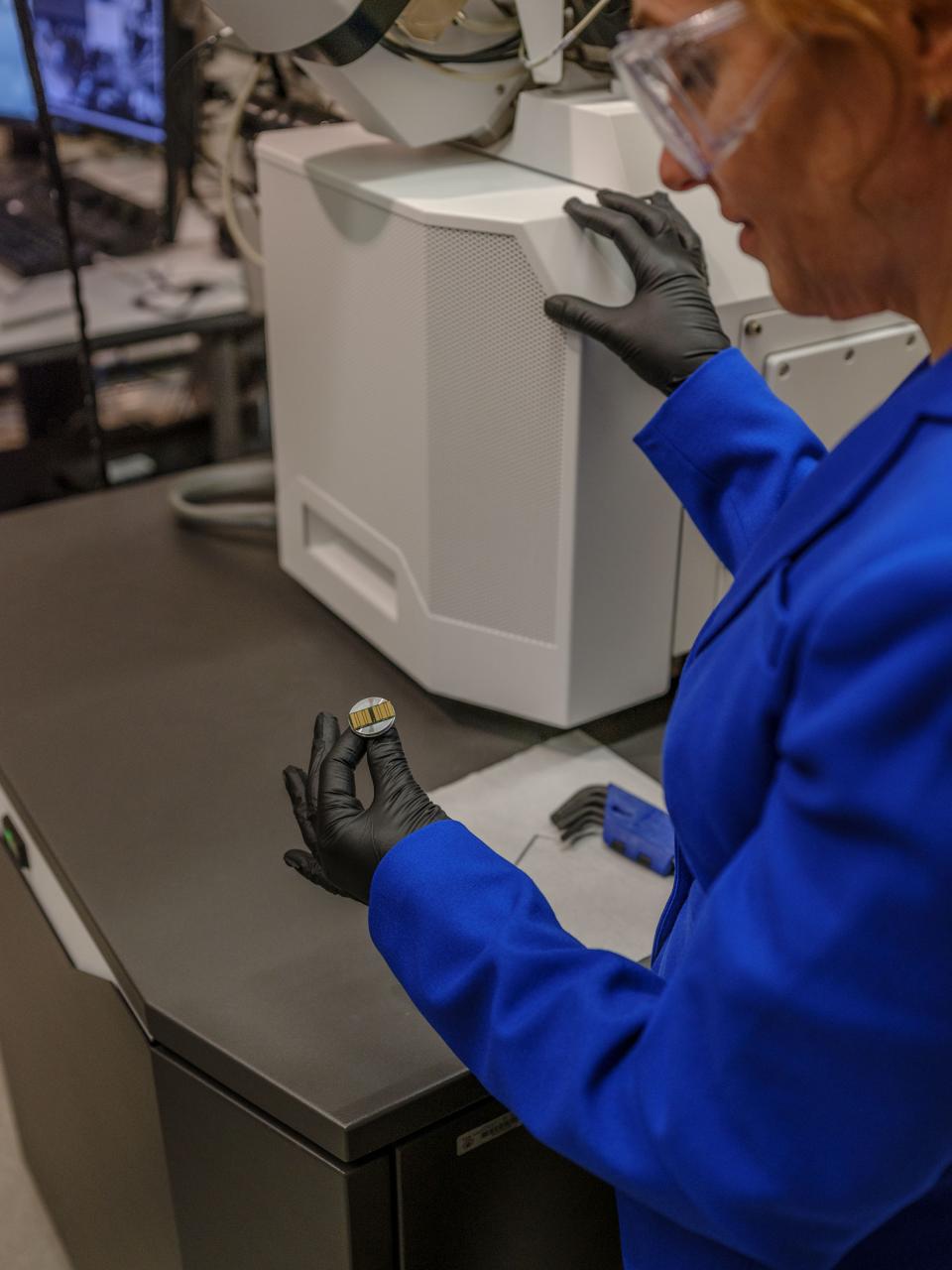
As the evolution of standard microchips comes to an end, scientists are looking for a revolution. The big problem is the development of more energy efficient chips and devices that combine memory and logic (memristors). Materials scientists at the University of Groningen in the Netherlands describe in two papers how complex oxides can be used to create energy-efficient spin-orbit magnetoelectric (MESO) devices and small memristive devices.
The development of classical silicon-based computers is approaching the limit. Further miniaturization and lower power consumption require different types of materials and architectures.
Tamalika Banerjee, Professor of Functional Materials Spintronics at the Zernike Institute for Advanced Materials at the University of Groningen, analyzes various quantum materials to create this new device. "Our approach is to study these materials and their interfaces, but always with an eye on applications such as memory or the combination of memory and logic."
More efficient
Banerjee's group has previously shown how to use doped strontium titanate to create memristors that combine memory and logic. They recently published two papers on "non-CMOS" devices that complement the metal oxide semiconductors that are the building blocks of today's computer chips.
One candidate to replace CMOS is the magnetoelectric spin-orbit device (MESO), which can be 10 to 30 times more efficient. Various materials have been studied for their suitability for the manufacture of such devices. Job van Rijn, Ph.D., a student of the Banerjee group, is the first author of a paper in Physical Review B published in December 2022 that explains how strontium manganate ( SrMnO3 , or SMO for short) might be a good candidate for MESO. devices for:
“This is a multiferroic material that combines the effects of spintronics and charge,” explains van Rijn. Spintronics is based on the spin (magnetic moment) of electrons.
Banerjee says, "This material combines magnetism and charge ordering, so we can change magnetism with an electric field and polarization with a magnetic field." And most importantly, this effect is present at a temperature close to room temperature. Van Rijn explores the strong relationship between the two effects. “We know that ferromagnetism and ferroelectricity can be controlled by shielding SMO thin films. This tension is achieved by growing layers on different substrates.”
pressure
Van Rijn studied how deformation induces ferroelectricity in materials and how it affects the magnetic order. He analyzed the domains of the films being imaged and noted that the magnetic interactions are highly dependent on the crystal structure and, in particular, oxygen vacancies that change the direction of the desired magnetic sequence.
“Experiments on spin transport have led us to the conclusion that magnetic domains play an active role in devices made from this material. Thus, this study is the first step in the potential application of strontium manganate to new computing architectures.”
On February 14, Banerjee's group published a second paper on "non-CMOS" devices in Advanced Electronic Materials . Physician: Student Anouk Goossens is the first author of this article on fabricating memristors based on niobium-doped strontium titanate ( SrTiO3 or STO). “The number of devices per unit area is important,” Goossens says. "But some types of memristors are hard to scale down."
Previously, Goossens showed that with STO it is possible to create devices with "logic in memory". Your last article shows that this device can be extended. A common problem with memristors is that their performance is adversely affected by miniaturization. Surprisingly, making a smaller memristor than STO increases the difference between high and low resistance.
“We examined the material using a scanning transmission electron microscope and noticed the presence of a large number of oxygen vacancies at the interface between the substrate and the electrodes of the device,” said Goossens. “Once a voltage was applied to the network, we saw a displacement of oxygen vacancies, which is a key factor in controlling the resistance state.”
New design
The bottom line is that performance gains come with edge effects that can damage conventional memory. But in STO, the added electric field at the ends actually supports the memristor function. “In our case, the target is the device,” Goossens concludes. “Furthermore, the exact properties depend on the amount of niobium doping, so the material can be tailored for different uses.”
In conclusion, two articles published by the group point the way to a new IT architecture. Indeed, the STO memristor inspired colleagues Goossens and Banerjee at the University of Groningen and the Bernoulli Institute for Mathematics, Computer Science and Artificial Intelligence at the University of Groningen and the Cognition University, who developed a new memory architecture design. .
"That's exactly what we're working on," Banerjee said. "We want to understand the physics of materials and how our devices work so we can develop applications." Goossens. “We envisioned several applications, and what we saw was a random number generator that works without an algorithm and therefore cannot be predicted.”
Further information: Improving memristive memory for neuromorphic computing through device miniaturization, Advanced Electronic Materials (2023). DOI: 10.1002/aelm.202201111
JJL van Rijn et al., Deformation-driven antiferromagnetic exchange interaction in SrMnO 3 as evidenced by phase magnetoresistance, Physical Review B (2022). DOI: 10.1103/PhysRevB.106.214415
Quote : Complex oxides could power computers in the future (2023 March 7). Source: https://techxplore.com/news/2023-03-complex-oxids-power-future.html
This document is protected by copyright. For private study or fair use for research purposes, no part may be reproduced without written permission. Content is provided for informational purposes only.
